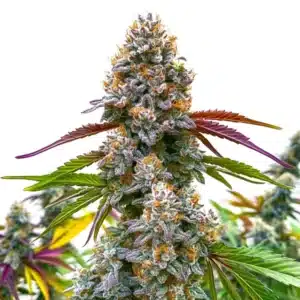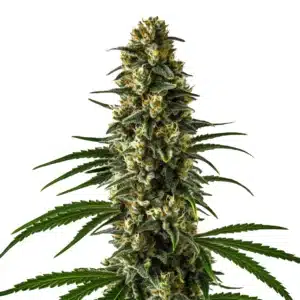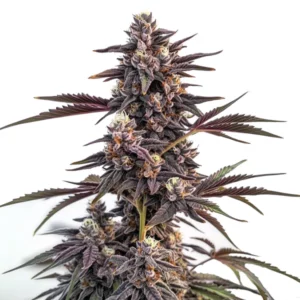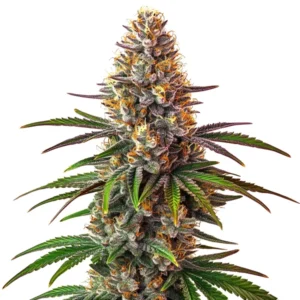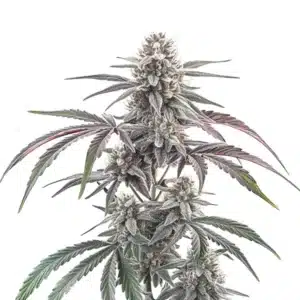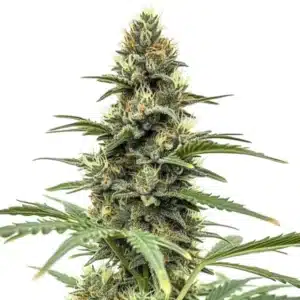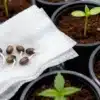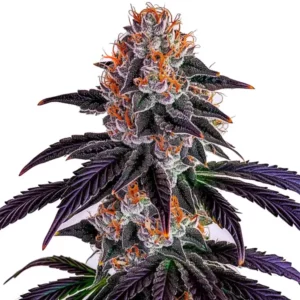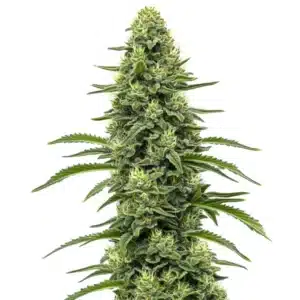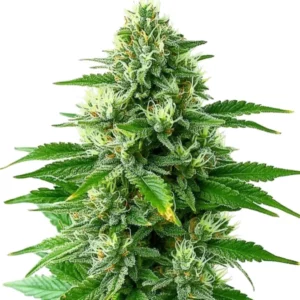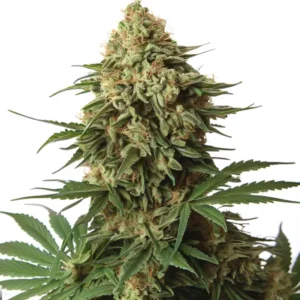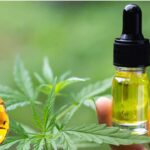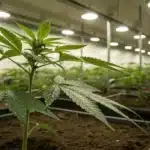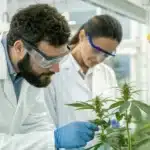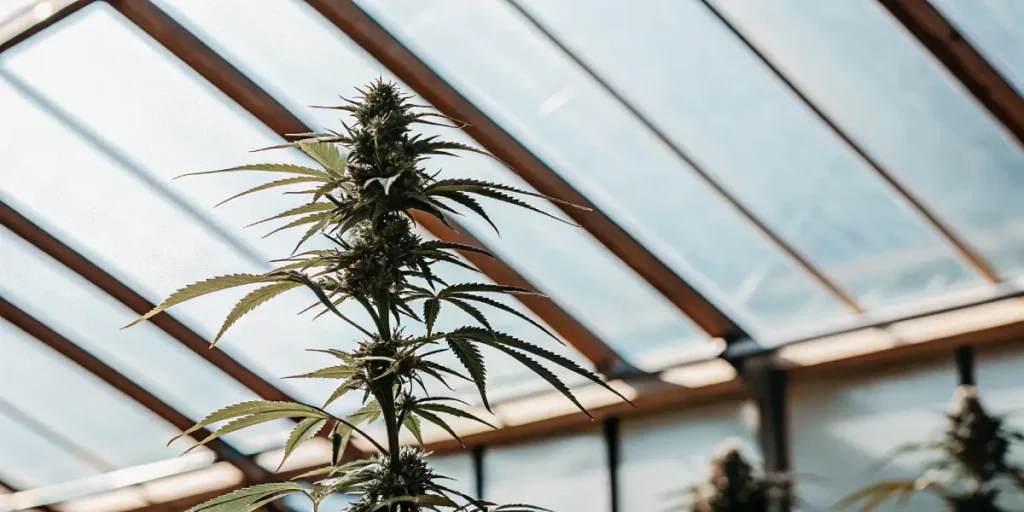
How Many Times Can You Top a Cannabis Plant?
Topping cannabis plants is a technique used to promote bushier growth and increase yield. But how many times can you top a cannabis plant effectively without causing stress? This is a common question among both new and experienced growers.
When considering how often to top a cannabis plant, the key is to understand the plant’s growth cycle. Topping involves cutting the main stem to encourage two new stems to grow. This not only results in a bushier plant but also helps in creating a more even canopy.
Recommended Strains
Critical Daddy Purple
|
|
THC | 19% (Medium) |
|
|
Type | Feminized |
|
|
Yield | High |
|
|
Phenotype | 50% Indica / 50% Sativa |
Girl Scout Cookies
|
|
THC | 18% - 25% (Medium) |
|
|
Type | Feminized |
|
|
Yield | High |
|
|
Phenotype | 60% Indica / 40% Sativa |
To determine the optimal number of toppings for cannabis, it’s crucial to assess the plant’s health and growth stage. Generally, topping is best done during the vegetative stage when the plant is actively growing. However, knowing the maximum times to top cannabis plants is essential to avoid over-stressing them.
Best Practices for Topping Cannabis Plants
One of the best practices for topping cannabis plants is to start when they have developed at least 4-5 nodes. Nodes are the points where leaves and branches grow from the stem. This ensures the plant is mature enough to handle the stress of topping.
After the initial topping, wait for the plant to recover and produce new nodes before considering topping again. This recovery period is crucial for the plant’s health and ensures optimal growth. The impacts of multiple toppings on cannabis growth can be positive if done correctly, resulting in a robust and productive plant.
It’s also beneficial to use clean, sharp tools when topping to prevent any infections or damage to the plant. Sterilizing your tools before use is one of the best practices for topping cannabis plants, ensuring clean cuts that promote healthy healing. Proper care and maintenance post-topping can aid in quicker recovery and more vigorous growth.
Another factor to consider is the plant’s environment. Maintaining optimal light, temperature, and humidity levels after topping can significantly influence how well the plant responds. By following these best practices, you ensure that your cannabis plant can handle multiple toppings without adverse effects, maximizing yield potential.
How Often to Top a Cannabis Plant
How often to top a cannabis plant depends on the strain and growth conditions. For instance, the Blue Dream strain from Blimburn Seeds is known for its resilience and can handle multiple toppings. However, always monitor your plants for signs of stress such as wilting or discoloration.
Frequent topping can be beneficial but should be spaced out to give the plant time to adapt. A general rule is to wait at least a week between toppings. This allows the plant to develop new growth and ensures a strong structure.
Determining how often to top a cannabis plant also involves knowing the plant’s growth rate. Faster-growing strains may recover more quickly and be ready for another topping sooner compared to slower-growing varieties. Keeping detailed records of each topping session can help in planning future toppings and optimizing plant health.
Additionally, consider the growing season’s length when deciding how often to top a cannabis plant. Topping too late in the season can interfere with the flowering stage, potentially affecting bud development and overall yield. Therefore, timing is crucial to ensure that each topping contributes positively to the plant’s growth and productivity.
Maximum Times to Top Cannabis Plants
The maximum times to top cannabis plants largely depends on the strain and growing conditions. Some plants can handle multiple toppings, while others may only tolerate one or two. For example, the Girl Scout Cookies strain from Blimburn Seeds is popular for its ability to thrive with several toppings.
It’s recommended not to exceed topping more than 3-4 times during the vegetative stage. Exceeding this limit can stress the plant, leading to stunted growth or reduced yield. Always observe your plant’s response to each topping and adjust your strategy accordingly.
Knowing the maximum times to top cannabis plants is crucial to avoid diminishing returns. While multiple toppings can lead to increased yield, overdoing it may result in a dense canopy that restricts light penetration, ultimately affecting bud development. Balancing the number of toppings with plant health is key.
Some strains are specifically bred to handle more stress, allowing for additional toppings without negative impacts. However, every plant is different, and growers should adjust their approach based on the specific needs and responses of their plants. This tailored strategy helps in achieving the best possible outcomes in terms of both plant health and yield.
Optimal Number of Toppings for Cannabis
Determining the optimal number of toppings for cannabis involves a bit of trial and error. Start with fewer toppings and gradually increase as you gain confidence and experience. Each strain has unique characteristics, and what works for one may not work for another.
Strains like the Critical Daddy Purple are known for their ability to handle multiple toppings without adverse effects. This makes them an excellent choice for growers who wish to experiment with different training techniques.
The optimal number of toppings for cannabis also depends on the grower’s goals and the growing environment. Those aiming for a larger yield may lean towards more toppings, while those prioritizing quality over quantity might opt for fewer. Evaluating your objectives can guide your topping strategy effectively.
Incorporating other training techniques alongside topping, such as low-stress training (LST) or super cropping, can enhance the overall structure and yield of the plant. By combining these methods, growers can achieve a balanced growth pattern that maximizes light exposure and airflow, leading to healthier plants and higher yields.
Promos & Deals
Impacts of Multiple Toppings on Cannabis Growth
Multiple toppings can significantly impact cannabis growth in positive ways. By promoting lateral growth, topping can lead to a more uniform canopy, allowing for better light distribution and air circulation. This, in turn, can improve the plant’s overall health and yield.
However, it’s crucial to be aware of the potential negative impacts of over-topping. Stress from excessive topping can lead to slower growth rates, reduced vigor, and in some cases, hermaphroditism, where the plant develops both male and female flowers.
By knowing the impacts of multiple toppings on cannabis growth, growers can make informed decisions about how many times to top a cannabis plant. While the benefits include increased colas and improved yields, the risks of stress and reduced vitality must be managed carefully to avoid negative outcomes.
Monitoring plant health post-topping is essential. Signs of stress, such as leaf yellowing or slowed growth, indicate the need for a recovery period. Providing optimal nutrients and environmental conditions can help the plant bounce back more swiftly, ensuring that the positive impacts of topping are fully realized.
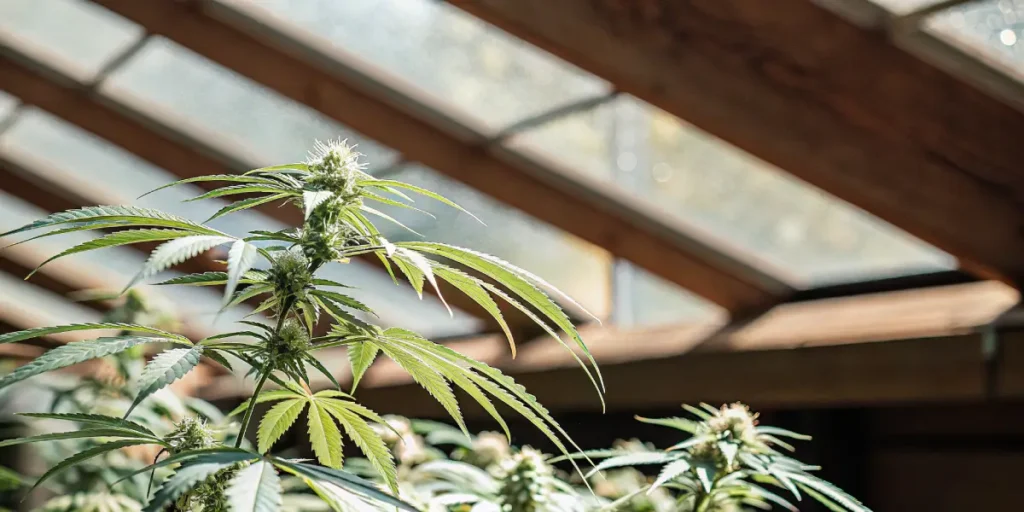
Real-Life Examples of Topping Success
Many growers have found success by topping their cannabis plants multiple times. For example, using the Blue Dream strain, a grower might top the plant three times during the vegetative stage. This results in a bushy plant with multiple colas, leading to a substantial yield.
Another grower using the Girl Scout Cookies strain might opt for just two toppings, focusing on creating a balanced canopy with even light distribution. This approach can be particularly effective in smaller grow spaces where height management is crucial.
Real-life examples of topping success highlight the importance of strain selection and environmental conditions in determining how many times to top a cannabis plant. Strains that are resilient and adaptable, like those mentioned, often respond well to multiple toppings, resulting in impressive yields.
These successes also underscore the value of patience and observation. By carefully monitoring plant responses and adjusting techniques as needed, growers can achieve significant improvements in both the structure and productivity of their cannabis plants, regardless of the number of toppings employed.
Frequently Asked Questions
How many times can you top a cannabis plant without stressing it?
In general, topping a cannabis plant 2-3 times during its vegetative stage is considered safe for most strains. This allows the plant to recover between toppings and reduces the risk of stress. Observing the plant’s health after each topping can help in deciding whether additional toppings are feasible.
Stress signs include drooping leaves, slow growth, or discoloration. If any of these appear, it’s best to halt further toppings and allow the plant to recover fully. Choosing resilient strains from Blimburn Seeds, like Critical Daddy Purple, can help in minimizing stress.
Knowing the limits of how many times you can top a cannabis plant is essential for maintaining plant health. It’s important to balance the desire for increased yield with the plant’s ability to handle stress, ensuring both vigor and productivity are maintained throughout the growth cycle.
Employing best practices for topping cannabis plants, such as ensuring proper recovery periods and providing optimal environmental conditions, can further reduce the likelihood of stress. By doing so, growers can achieve the best results without compromising plant health or yield potential.
What are the best practices for topping cannabis plants?
Best practices involve starting topping when the plant has at least 4-5 nodes. Ensure that your tools are sterilized to prevent infections. After topping, monitor the plant closely for signs of stress and provide ample light and nutrients to support recovery.
Spacing out toppings by at least one week is crucial. This allows the plant to adapt and grow stronger. Adjust your topping strategy based on the plant’s response, and keep environmental factors optimal to support healthy growth.
Another best practice for topping cannabis plants is to closely observe the plant’s growth pattern and adjust the number of toppings accordingly. Some plants may thrive with more frequent toppings, while others might require a more conservative approach.
Additionally, integrating other cultivation techniques, such as pruning or defoliation, can complement the topping process, leading to a more balanced and productive plant structure. By employing a holistic approach, growers can maximize the benefits of topping while maintaining overall plant health.
Can all cannabis strains be topped multiple times?
Not all cannabis strains respond well to multiple toppings. Some may only tolerate one or two toppings before showing signs of stress. It’s essential to research the specific strain you’re growing to understand its tolerance levels.
Strains like Blue Dream, available at Blimburn Seeds, are known for their ability to handle several toppings. However, always start with fewer toppings and gradually increase as you observe the plant’s response to the technique.
Knowing the genetic background of your strain can provide insights into how many times you can top a cannabis plant. Genetics play a crucial role in determining a plant’s resilience and ability to recover from stress, making research and experimentation key components of successful topping.
In cases where a strain is less tolerant to topping, alternative training methods such as low-stress training (LST) might be more suitable. These methods can still enhance yield and plant structure without the potential stress associated with multiple toppings.
What are the impacts of multiple toppings on cannabis growth?
Multiple toppings can enhance lateral growth, leading to bushier plants with more colas. This can result in higher yields and a more manageable plant structure. However, over-topping can stress the plant, leading to slower growth or reduced yields.
A balanced approach is essential. Ensure that each topping is followed by a recovery period, and observe the plant’s health closely. Adjusting your strategy based on the plant’s response will help in achieving the desired results without compromising the plant’s health.
The impacts of multiple toppings on cannabis growth also include improved light penetration, which can lead to more uniform bud development. By managing the plant’s canopy effectively, growers can ensure that each part of the plant receives adequate light and air, promoting healthy growth overall.
While the benefits of topping are significant, it’s important to remember that each plant has its limits. By respecting these boundaries and providing the necessary care and attention, growers can maximize the benefits of topping while maintaining plant health and productivity.
How do I know when to stop topping my cannabis plant?
Deciding when to stop topping involves observing the plant’s growth and response to previous toppings. If the plant shows signs of stress or if the growing season is nearing its end, it’s best to cease further toppings.
Additionally, consider the plant’s size and the available space. Over-topping can lead to a dense canopy that might block light and air. Once the plant has achieved a balanced structure and healthy growth, it’s advisable to stop further toppings and focus on maintaining optimal growing conditions.
Observing the plant’s overall structure can also guide decisions on when to stop topping. If the desired shape and size have been achieved, further toppings may be unnecessary and could introduce unwanted stress. Balancing growth with environmental constraints is crucial for optimal results.
Furthermore, understanding the strain’s flowering time can impact topping decisions. Topping too close to the flowering stage can interfere with bud development. By aligning topping practices with the plant’s natural growth cycle, growers can ensure a smooth transition from vegetative growth to flowering.


